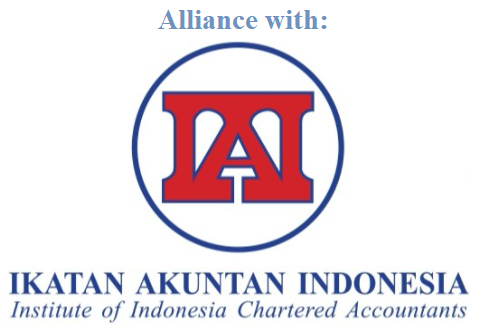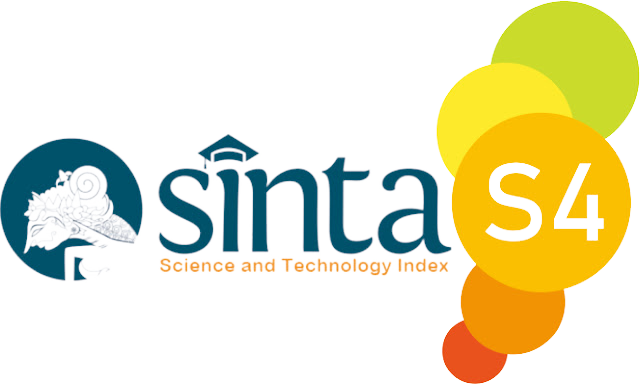PENGARUH LABA DAN ARUS KAS TERHADAP KONDISI FINANCIAL DISTRESS PADA PERUSAHAAN MANUFAKTUR YANG TERDAFTAR DI BURSA EFEK INDONESIA
DOI:
https://doi.org/10.37301/jkaa.v17i2.92Keywords:
profit, cash flow and financial distressAbstract
Financial distress is a term that is not commonly heard in public. In fact, financial distress occurs all around us. Losses, inability to pay debts, bankruptcy and default are included in the stage of financial distress. The term that is more familiar to the public is the financial crisis. This study examines whether earnings and cash flow affect the occurence of financial distress conditions by using the Zmijewski method which is still rarely used. Is it true that if profits and cash flows have decreased or are negative, the company is considered to be in financial distress state? Through multiple- regression analysis research methods using Eviews software, and secondary data from www.idx.co.id, the author processed the data to determine the effect of profits and cash flows on the financial distress of manufacturing companies listed on the Indonesia Stock Exchange in 2016-2020. The analysis was carried out by doing assumption test and then proceed with hypothesis testing. The result showing that profits and cash flows have a significant negative effect on financial distress conditions with the probability of profit variable of 0,000 and operating cash flow variable of 0,0114.
References
Afandi, J. (2018). Pengakuan Pendapatan Menurut SAK dan Pengakuan Pendapatan Menurut SAP. www.ksap.org.
Brigham, & Houston. (2014). Essentials of FinancialManagement. Dasar-dasar Manajemen Keuangan, Buku 2. Edisi 11. Salemba Empat.
Cox, D. (2015). Financial Statement. UK: Osborne Books Limited. www.openlibrary.org
Faturrahman. (2021). Analisis Pengaruh Arus Kas, Laba Bersih Dan Leverage Terhadap Financial Distress (Studi Pada Perusahaan Sektor Aneka Industri Yang Terdaftar Di BEI Tahun 2016-2020). www.repository.ugr.ac.id
Febrina, H., & Dkk. (2021). Dasar-Dasar Analisis Laporan Keuangan. CV Media Sains Indonesia.
Hariyanto, M. (2018). Pengaruh laba dan arus kas terhadap kondisi financial distress. Jurnal Akuntansi, 3(1), 44–60. www.garuda.kemdikbud.go.id ›
Hery. (2016). Analisis Laporan Keuangan: Interated and Comprehensive Edition. Grasindo.
Juliani, R. H., & Muslihat, A. (2021). Influence of Profit and Cash Flow on Financial Distress Conditions. Jurnal Ilmu Manajemen Profitability, 5(2), 327–339. https://doi.org/10.26618/profitability.v5i2.5905
Julius, F. (2017). Pengaruh financial leverage, firm growth, laba dan arus kas terhadap financial distress. JOM Fekon, Vol.4(No.1), 1164–1178.
Kasmir. (2016). Analisis Laporan Keuangan. Rajagrafindo Persada.
Kieso, D. E., Kimmel, P. D., & Weygandt, J. J. (2018). .Financial Accounting: Tools for Business Decision Making. Book.
Kristanti, F. T. (2019). Financial Distress Teori dan Perkembangannya dalam Konteks Indonesia. Inteligensia Media.
Listyarini, F. (2020). Analisis Perbandingan Prediksi Kondisi Financial Distress Dengan Menggunakan Metode Altman, Springate, Dan Zmijewski. Jurnal Bina Akuntansi, 7(1), 1–20. https://doi.org/10.52859/jba.v7i1.71
Natariasari, R., & Indarto, M. (2014). Manfaat laba dan arus kas untuk memprediksi kondisi financial distress (studi pada perusahaan manufaktur di bursa efek Indonesia). Jurnal Sosial Ekonomi Pembangunan, 6(11), 152–173.
Prihadi, T. (2019). Analisis Laporan Keuangan Konsep dan Aplikasi.
Putri, E. P. (2019). Analisis Prediksi Kebangkrutan Dengan Metode Altman, Dan Springate Pada Perusahaan Pertambangan Yang Terdaftar Di Bursa Efek Indonesia Tahun 2016 - 2018. 1–99.
Rahayu, S. I., Suherman, A., & Indrawan, A. (2021). PENGARUH LABA DAN ARUS KAS TERHADAP FINANCIAL DISTRESS (Studi Kasus Pada Perusahaan Manufaktur yang Terdaftar di Bursa Efek Indonesia). Jurnal Akuntansi Unihaz -Jaz, 4(1), 78–93.
Ratnawati, F. D. (2018). PENGARUH MAKRO EKONOMI, KEBIJAKAN HUTANG, UKURAN PERUSAHAAN DAN PROFITABILITAS TERHADAP NILAI PERUSAHAAN (Studi Kasus pada Perusahaan LQ45 yang Terdaftar di Bursa Efek Indonesia Periode 2014-2016). Universitas 17 Agustus 1945 Surabaya.
Sugiyono. (2013). Metode Penelitian Kuantitatif Kualitatif dan R&D. Alfabeta.
Downloads
Published
Issue
Section
License
Please find the rights and licenses in Jurnal Kajian Akuntansi dan Auditing (JKAA). By submitting the article/manuscript of the article, the author(s) agree with this policy. No specific document sign-off is required.
1. License
The non-commercial use of the article will be governed by the Creative Commons Attribution license as currently displayed on Creative Commons Attribution-NonCommercial 4.0 International License.
2. Author(s)' Warranties
The author warrants that the article is original, written by stated author(s), has not been published before, contains no unlawful statements, does not infringe the rights of others, is subject to copyright that is vested exclusively in the author and free of any third party rights, and that any necessary written permissions to quote from other sources have been obtained by the author(s).
3. User/Public Rights
JKAA's spirit is to disseminate articles published are as free as possible. Under the Creative Commons Attribution-NonCommercial 4.0 International License, JKAA permits users to copy, distribute, display, and perform the work for non-commercial purposes only. Users will also need to attribute authors and JKAA on distributing works in the journal and other media of publications. Unless otherwise stated, the authors are public entities as soon as their articles got published.
4. Copyrights Holder
With the receipt of the article by Editorial Board of the Jurnal Kajian Akutansi dan Auditing (JKAA) and it was decided to be published, then the copyright regarding the article will be diverted to Jurnal Kajian Akutansi dan Auditing (JKAA).
Jurnal Kajian Akutansi dan Auditing (JKAA) hold the copyright regarding all the published articles and has the right to multiply and distribute the article under

















